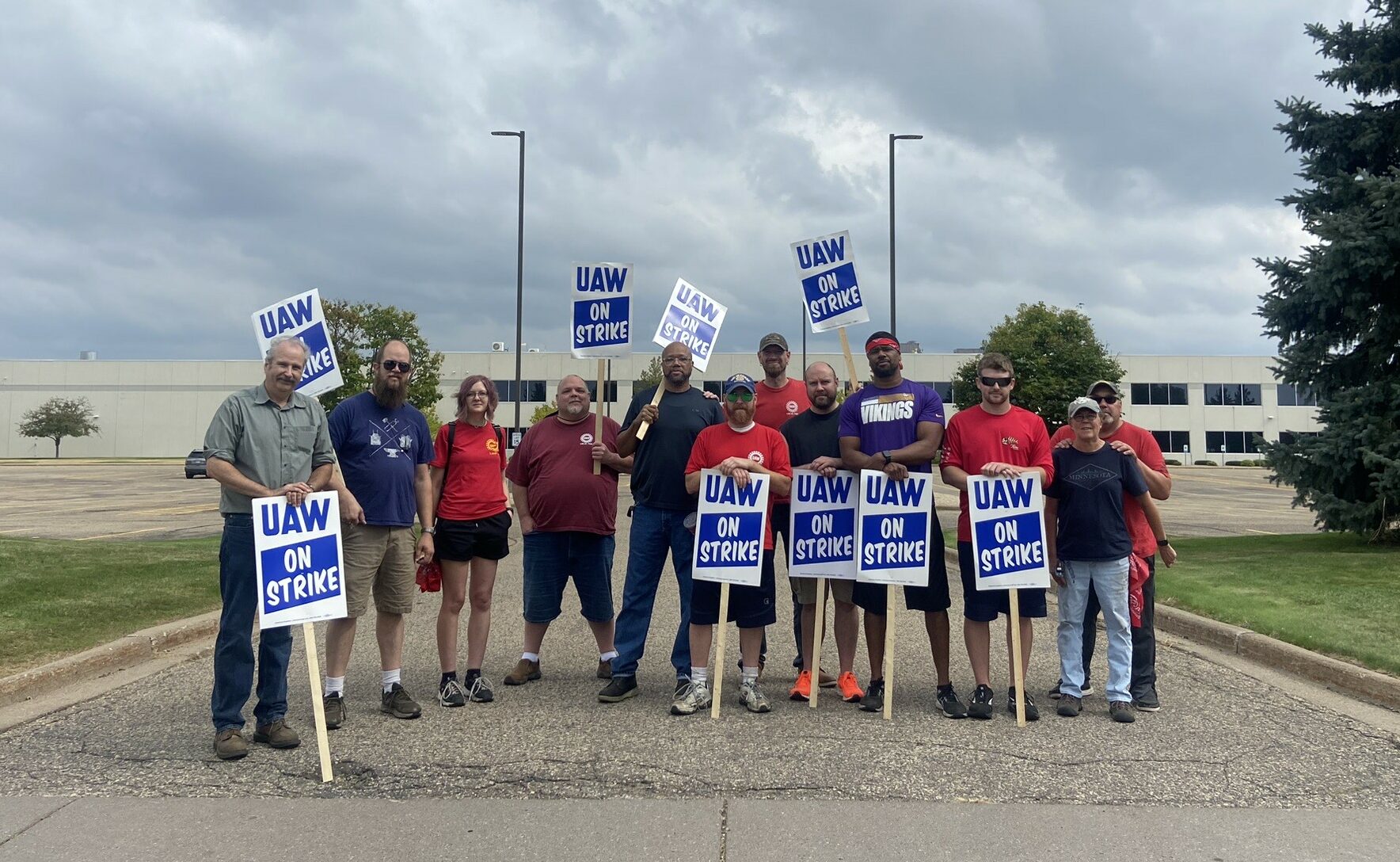
Eric McAleavey, (sixth from right) and other workers at the General Motors’ Hudson Parts Distribution Center in Wisconsin picket outside the facility on Sept, 22, 2023. They were among 38 parts distribution centers called out on Friday to escalate UAW’s ”stand-up strike” against the Big Three Automakers.

Share
HUDSON, WIS.—On the morning of Friday, September 22, workers at General Motors Parts Distribution Center calmly put away their equipment, gathered their personal belongings and stepped off the job. They’d been selected to strike as a part of the United Auto Workers’ second wave of stand-up strikes against the “Big Three” automakers (Ford, GM and Stellantis).
A line of cars formed exiting the parking lot, filled with workers wearing red UAW shirts, as truck drivers along the industrial road sounded their horns in solidarity.
The Hudson, Wis., facility, located just over 20 miles from Minnesota’s Twin Cities, last went on strike for 44 days in 2019 as a part of a national UAW strike against GM. Kenny Carrier, a GM worker for 27 years and a shop chair in his UAW Local 722, reflects that there were many demands that were not won in the 2019 strike, but the new national leadership of the UAW makes him more optimistic this time around.
Several workers say that while they hope this strike won’t go as long as the 2019 strike, they’re willing to strike for however long it takes. Workers are already contributing to a shed of firewood on the picket line in case the strike continues through the colder months.
The president of UAW Local 722, Steve Frisque, wears a t-shirt that reads “COLA and fair pay now”, alluding to the cost-of-living allowance (COLA) that workers sacrificed to support the company through bankruptcy in 2009. Although the companies are now making record profits, the workers have yet to recuperate COLA, and it’s one of the union’s top demands. Ford has reportedly already agreed to reinstate it.
Another big demand is the end of the “two-tier” pay structure, which allows two workers doing the same job, working alongside each other, to be compensated very differently depending on their date of hire.
Workers share that the tiers damage camaraderie in the workplace. John Mandel, hired in 2011 as a “Tier 1” worker, says of his fellow worker hired as a temp, “To see that [he] does the same job I do for less is unjustifiable.”
The union is also demanding that temps be converted to permanent status within 90 days. Eric McAleavey, a former temp worker, says he was hired in 2015 with a lower wage, minimal medical insurance, no profit-sharing, no vacation and no retirement benefits. It took the company two years to make him a permanent worker.
Frisque laments that these were jobs that “helped build the middle class”, but over time, wages have stagnated, even as Big Three CEO compensation skyrocketed an average of 40% in only the last four years. ”Pretty soon it’s going to be two classes: the rich and the poor,” he says. “We had to draw the line in the sand somewhere.”
This article is a joint publication of In These Times and Workday Magazine, a non-profit newsroom devoted to holding the powerful accountable through the perspective of workers.

